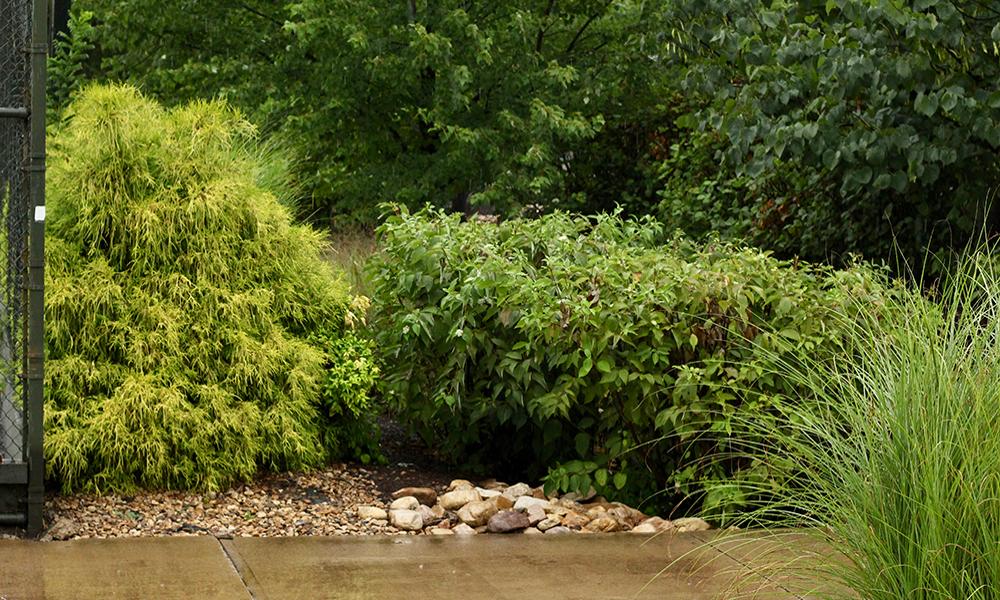
SIBERT CREEK RAIN GARDEN
The Sibert Creek Rain Garden is location 6 on the tour. The following description also appears on the Story Map.
The Sibert Creek Rain Garden is designed to allow water to soak into the ground while treating pollutants. Underneath the mulch and plants in the rain garden are layers of other materials, including a layer that is a mixture of compost, sand, and topsoil. Plants in the rain garden serve to further aid in the treatment of pollutants from the water. In addition, the plants, many of which are native to this region, are drought and disease resistant and provide food and shelter for birds, butterflies, and other wildlife. This project was informed by student and faculty studio course work in 2009.
SUSTAINABILITY FEATURES
Rain gardens are an example of green infrastructure, which are defined as "the range of measures that use plant or soil systems, permeable pavement or other permeable surfaces or substrates, stormwater harvest and reuse, or landscaping to store, infiltrate, or evapotranspirate stormwater and reduce flows to sewer systems or to surface waters." According to the Environmental Protection Agency, "Green infrastructure is a cost-effective and resilient approach to managing stormwater that can bring many social, economic, public health, and environmental benefits to communities." To learn more about stormwater management efforts at JMU, watch the video from JMU's Stormwater Coordinator.
STUDIES
Without Boundaries: Design and Environmental Stewardship, Daniel M. Ronn and Dawn M. McCusker, 9th International European Academy of Design Conference, Universty of Porto, Porto, Portugal, May 4-7, 2011.

